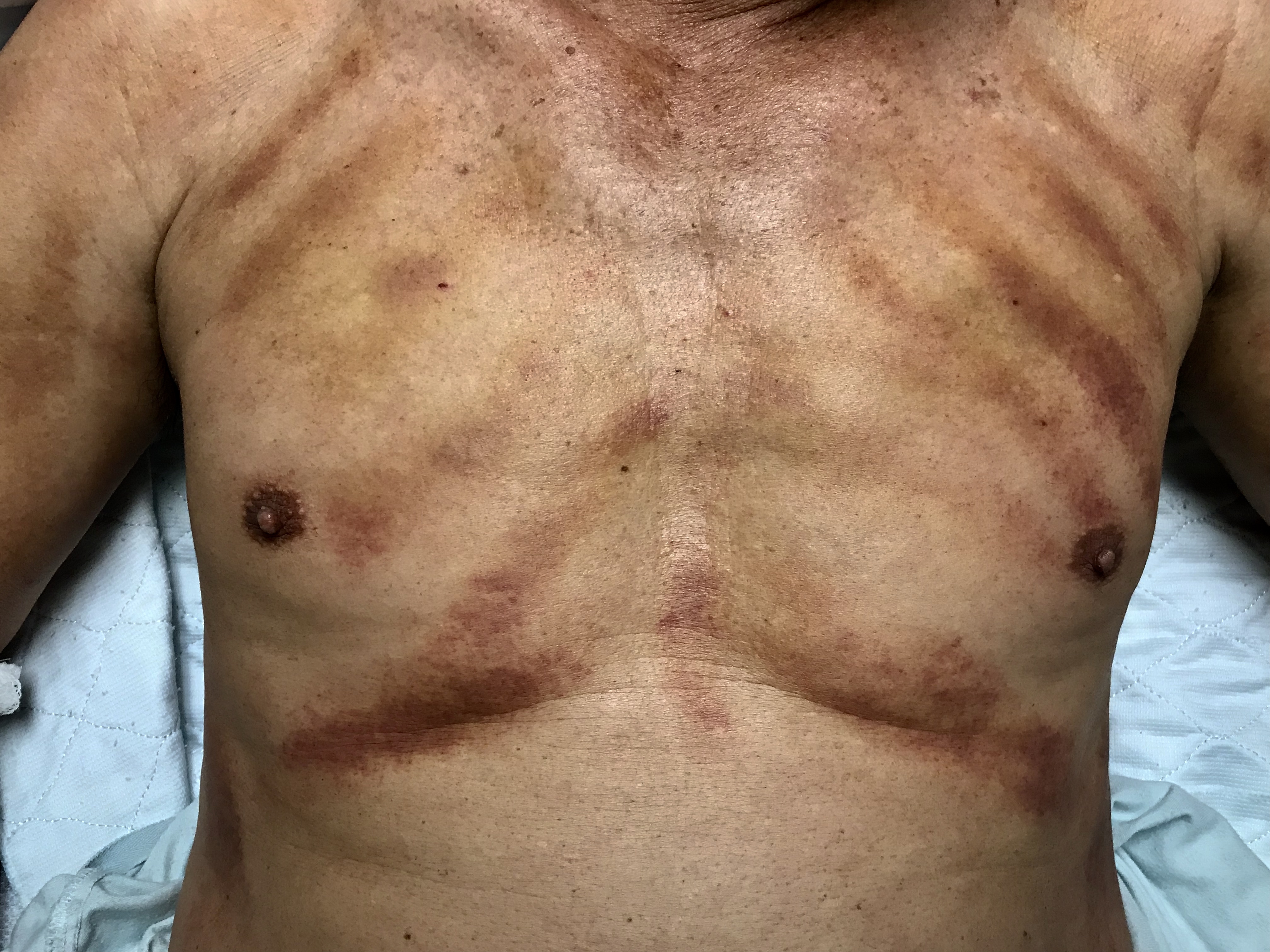Case Presentation: A 68-year-old Cambodian male with no known past medical history presented to the emergency department after experiencing three days of nausea and vomiting. The patient reported, prior to becoming ill, he went fishing for a couple of hours. Later in the day he consumed undercooked fish. Patient’s vital signs on admission were temperature of 97.2 °F, heart rate 66/min, blood pressure 183/92 and respiratory rate 18/min. His physical exam was benign, except for the presence of linear ecchymosis and streaky erythematous skin discoloration across his upper chest and back. Blood work revealed an elevated creatinine of 3.97 mg/dl and urinalysis showed the presence of blood with few red blood cells. On further work up he was found to have a myoglobin of 500 nmol/L and creatinine kinase of 2,700 U/L. He had no previous laboratory results for comparison. He was diagnosed with acute kidney injury secondary to rhabdomyolysis. Aggressive fluid repletion was initiated. His kidney function improved over the hospitalization, during which time he was questioned further to determine the cause of his skin lesions. He informed us that the day prior to admission he had received Gua sha for his nausea and vomiting. This was regularly practiced in the family to alleviate symptoms. Upon discharge his creatinine was 1.75 mg/dl.
Discussion: Gua sha (“coining”) is an alternative medicine practice that is used commonly by Southeast Asians with increasing frequency by Americans. Coining is an ancient technique in which an edge of a coin is firmly stroked against lubricated skin in a linear pattern. The skin is massaged repeatedly apparently to relieve various disease symptoms and discomfort with the goal of removing negative energy and restoring balance. Coining can lead to rupture of blood vessels causing ecchymosis and pressure injury leading to muscle breakdown. In the setting of preexisting volume depletion, fallout can include rhabdomyolysis and acute kidney injury. Patients are often hesitant reveling guarded parts of their lives including recreational drug use, sexual behavior, and unconventional medical therapies. It is important for physicians to be cognizant of alternative medical practices which would help with accurate diagnosis and an open patient-physician relationship.
Conclusions: There is a paucity of data regarding the use of alternative medicine in the United States. One of the largest surveys demonstrated that one in three Americans had used “unconventional therapies.” Although practiced for their healing effects, they may pose health risks which are often unrecognized by treating physicians. It is critical for healthcare providers to be aware of these practices and their effects on patient’s health. In this report we discussed a patient that presented with rhabdomyolysis after receiving Gua sha, an alternative medicine practice that is colloquially referred to as “coining”, to treat his gastroenteritis like symptoms.

